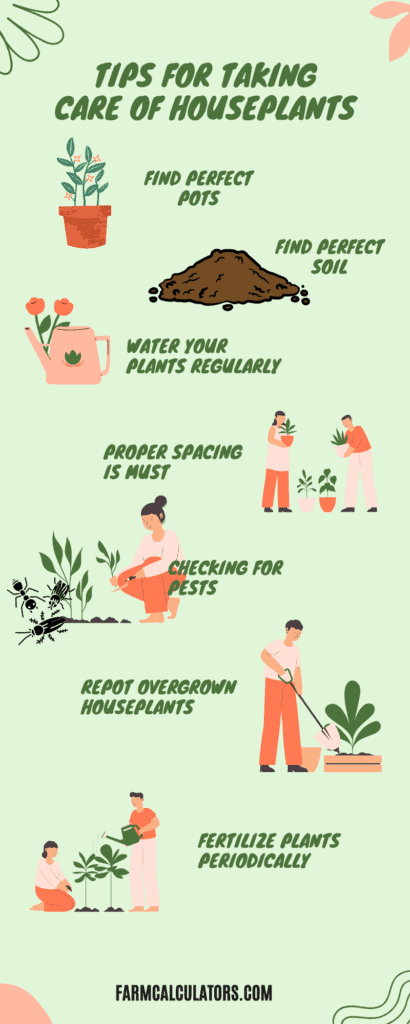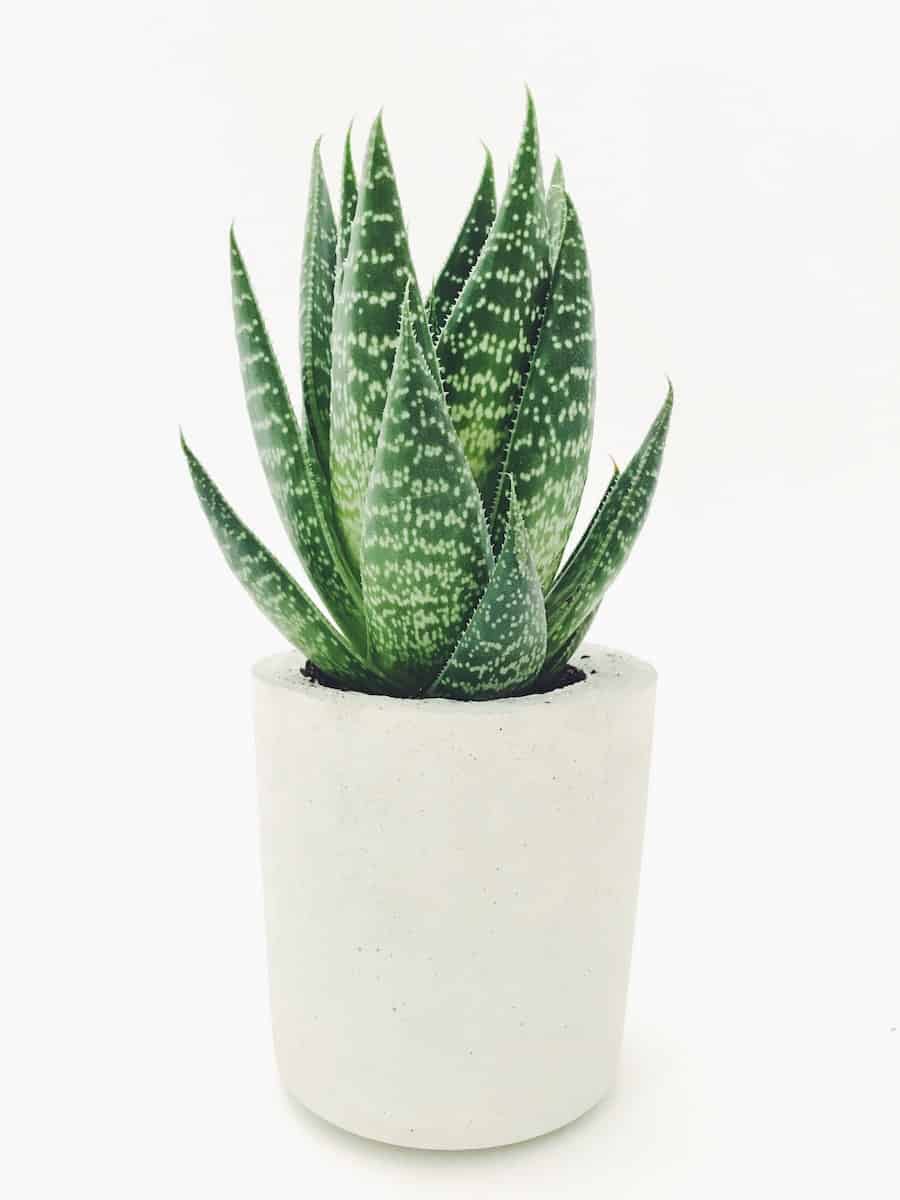
Houseplant care requires proper planning ! If you’ve recently become a “plant parent,” you’re likely feeling a mix of excitement, curiosity, and maybe a little bit of worry. It’s a big responsibility to keep a living thing alive and thriving, but don’t worry! With the right tips, you’ll be a pro in no time. Here, we provide 10 essential tips to help ensure your houseplants get the best care. From selecting the right type of potting soil to understanding when to water, these tips will help you keep your plants healthy and happy. With just a few simple steps, you can have a beautiful and thriving houseplant collection that you can enjoy for years to come.
1. Right Pot is the first step in houseplant care

The type of pot you choose will have a big effect on how your houseplant grows. For example, terracotta pots have porous surfaces, which allow for better drainage. Meanwhile, ceramic pots are less porous, which means they retain water longer and are better for plants that need more water. When shopping for pots, there are a few important things to keep in mind. First, make sure the pot is the right size for your plant. Your plant should have plenty of room to grow and stretch out, but not be too big for the pot.
Pots are typically measured by the diameter of the pot, i.e. the distance across from one side to the other. Ideally, your plant should be in a pot that’s about one inch less than the diameter of its root ball. This will allow for plenty of room to breathe, grow, and stretch. Next, you’ll want to make sure the pot is made out of a material that’s right for your plant. For example, succulents need porous materials so they can absorb and retain water. Meanwhile, cacti prefer pots made out of a nonporous and water-resistant material. Lastly, you’ll want to make sure to select a pot with the proper drainage holes. Some pots might not have any drainage holes, while others might have too many.
2.Proper spacing is must
Proper planting space is essential. Each plant has its own spacing needs but a few tips like providing proper air circulation around the plants or choosing a large pot must be considered. Grouping the plants rightly will also help in reducing the need for weeding and the wastage of water. Moreover, it leads to easier path maintenance.
3. Repot overgrown houseplants
Not sure if your plants need repotting? Check the root systems. If the roots are circling the inside of the container, it may be time to repot the plant. If the plant has outgrown it’s pot, you can transplant it into a slightly larger container. As you repot your plants, it’s also a good time to divide those with multiple stems to create new plants. Spring and summer are the best seasons for repotting your plants.
4. Fertilize plants periodically
Like watering, there’s no easy rule to know how much to fertilize: It depends on the plant’s growth rate and age and the time of year. Most houseplants put on a growth spurt in spring and summer, so this is the best time to fertilize them. During the short days of fall and winter, most houseplants don’t need much, if any, fertilizer.Some plants, like ferns, will flourish with very little fertilization. Others, like cacti, need fertilizer to thrive.
5. Selecting the right potting soil

The type of soil you choose will have a big effect on how your plants grow and thrive. That’s why it’s important to pick the right potting soil for your plants. When shopping for potting soil, you’ll likely see two options at your local garden supply store: regular potting soil and cacti and succulent potting soil. Both types have different ingredients, which will affect how well they work in different plants. The most important thing you can do is research which type of potting soil is best for your specific houseplant. When shopping for potting soil, also be sure to look for a bag with a clean and simple ingredient list. The fewer ingredients, the better! This will help reduce the risk of your plants getting sick or becoming infested with pests or pests. Overall, there are two main types of potting soil: soilless and soil-based. Soilless potting soil is lightweight and usually doesn’t have any organic materials, such as peat or bark, in it. Soil-based potting soil, on the other hand, is more like topsoil, as it uses organic materials like peat or bark. Soilless potting soils are best for plants that grow more quickly and don’t need as much nutrition.
6. Understanding when to water
Knowing exactly when to water your plants is important because overwatering can be harmful or even fatal to your plants. While some plants, like cacti, prefer to be almost completely dry, others, like ferns, prefer always to be kept moist. That said, many houseplants fall somewhere in the middle and can be tricky to understand. On the plus side, there are a few ways to know exactly when to water your plants. First, check the soil. If the soil is completely dried out, it’s time to water. However, it’s also helpful to know what type of pot your plant is in. For example, if your plant is in a terracotta pot, the soil will dry out quicker than a plant in a ceramic pot. With that in mind, you should check the soil every couple of days and water it when it feels dry.
7. Avoiding overwatering
Ironically, overwatering is a common mistake made by new plant parents. It’s easy to assume that watering once a week is enough, but plants need more water than you may realize. If your plant starts to yellow and droop, it’s a sign that you need to increase the amount of water you’re giving it. On the other hand, if your plant’s leaves turn dark brown (or black) and look shriveled, it is probably being over-watered. You can also check the soil for signs of overwatering, such as lots of dark and muddy soil or water pooling at the bottom of the pot. Additionally, you can check your plant for signs of overwatering, such as root rot or fungal diseases.
8. Getting the right amount of light
It’s important to know how much light your houseplants are used to and adjust the level of light accordingly. Some plants like low light, while others need bright, direct sunlight. When selecting your houseplants, it’s important to keep in mind the amount of natural light they’d get in their native environment. For example, if you live near the equator, you’ll likely want to avoid cacti and desert houseplants. Meanwhile, a fern is a good choice for low-light areas. If you’ve already purchased a plant and are wondering how much light it needs, there are a few ways you can figure it out. You can check the tag on the plant for the light level, or you can create an indoor light meter. To create a light meter, place an analog or digital thermometer in a jar of water and place the lid on the jar. Seal the jar with an elastic band, and place it in the area where you’ll be putting the plant. After a few hours, check the water level to see the light level.
9. Pruning and repotting
It’s important to prune your plants regularly (but make sure never to prune live houseplants during the winter months). This is an important part of plant care because it helps your plant stay healthy. While trimming back the leaves every now and then is fine, pruning every few months will keep your plant healthy and growing strong. Additionally, many houseplants need to be repotted every one to two years. When repotting, you want to make sure to choose a pot that is the same size as your old pot. This will ensure that your plant can still get enough water and nutrients from the soil. It’s also important to make sure that the type of potting soil you use stays consistent. However, there are a few types of plants that should never be repotted. These include bromeliads, orchids, and certain ferns. If you have any of these types of plants, it’s best to just avoid repotting altogether.
10. Checking for pests
If you notice your plant has an infestation of pests, such as mites or aphids, it’s important to treat it right away. The best way to treat an infestation is to use an organic pesticide like neem oil. It’s also important to check your plants regularly for pests, so you can catch and treat them before they become a problem. When checking for pests, it’s important to inspect both the tops of the leaves and the undersides of the leaves. This is because many pests hide on the undersides of the leaves, where they are difficult to see. If you notice pests on your plants, it’s important to act quickly. You’ll want to thoroughly wash your hands before touching any plants, as many pests can be easily transferred from plant to plant. To kill the pests on your plants, you can mix a solution of water and soap, or use rubbing alcohol.
Lastly, watch this so educative video by Pick up Limes